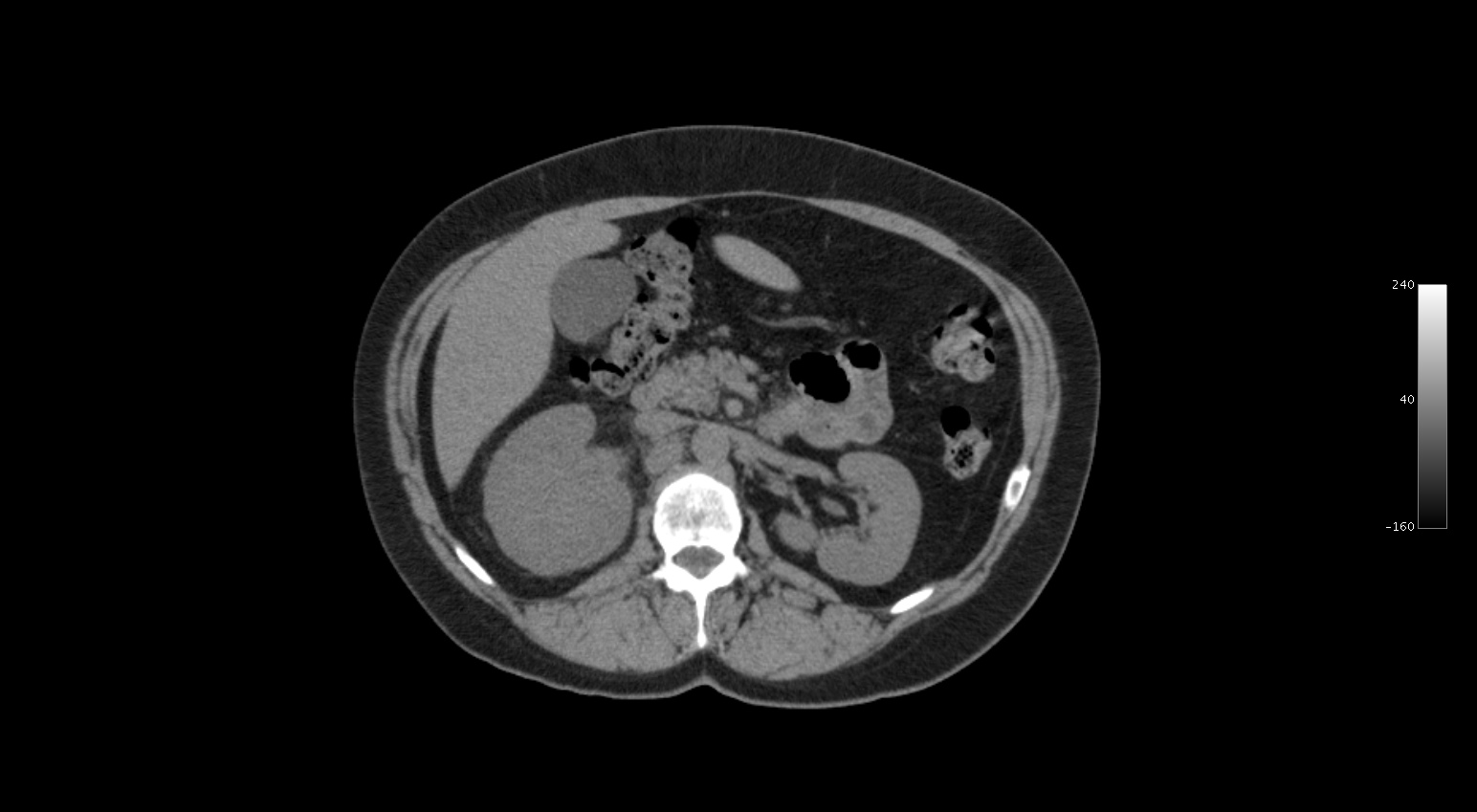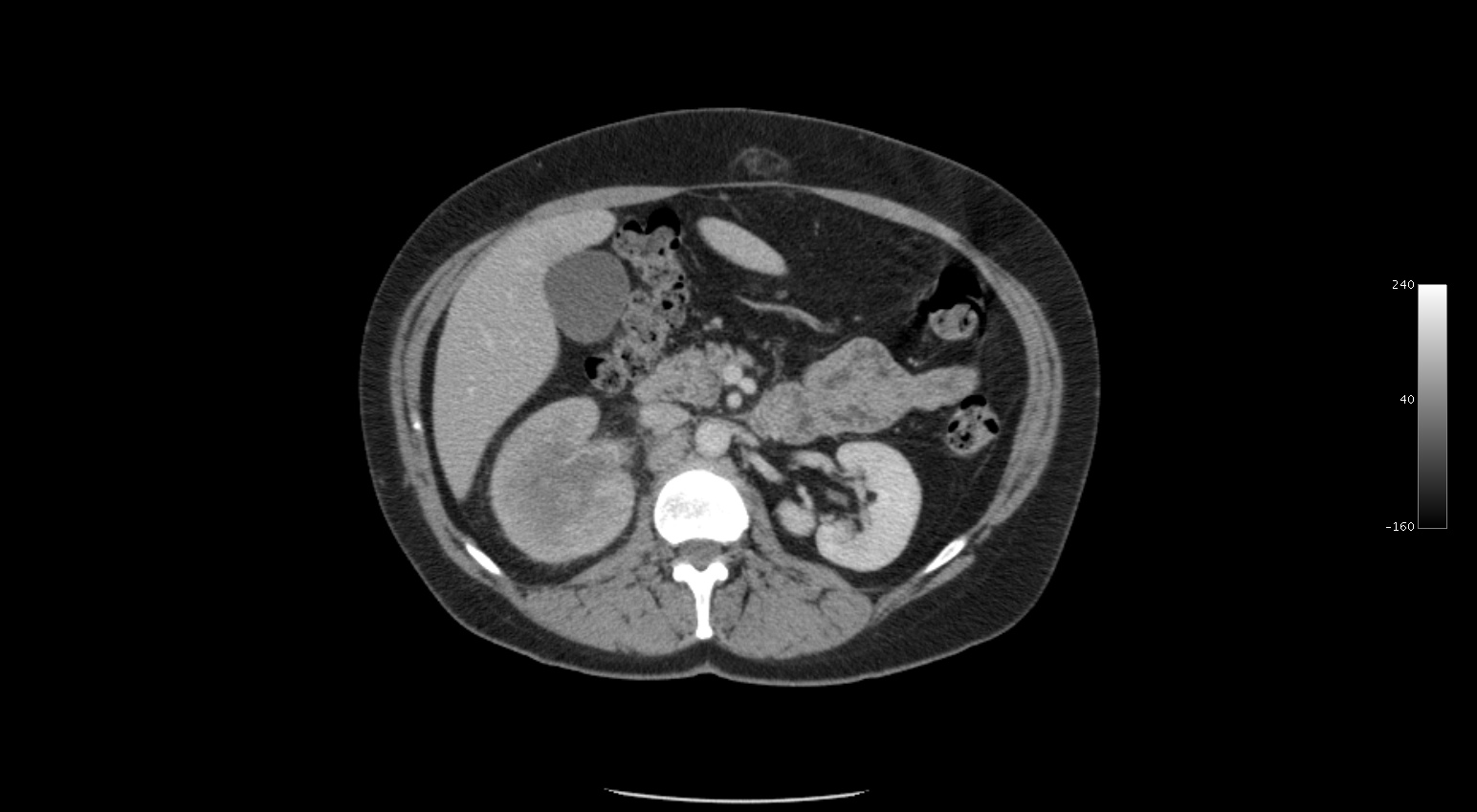History: 56 yo female with hematuria and flank pain. Had a \"normal\" CT for similar symptoms 4 months previously.
Solution: Transitional cell carcinoma
The imaging findings in this case include an infiltrative process involving the right kidney that shows maintained corticomedullary differentiation, poor perfusion, no excretion and spares some parts of the kidney. The differential should include processes that infiltrate the kidney such as transitional cell carcinoma, lymphoma, and infection primarily. Considering the relatively minimal symptoms, it seems unlikely to be an infection severe enough to cause this degree of imaging changes. The rapid change in appearance would seem to argue against a process like TCC, which tends to be more indolent. Therefore, it would seem like lymphoma might be the most likely diagnosis. However, this turned out to be TCC, likely infiltrating centrally and resulting in perfusion changes to the more peripheral cortex.
Transitional cell carcinoma is the most common urothelial tumor and its incidence is increased by smoking, aniline dye, benzidine, aromatic amines, other toxic manufacture related chemicals, cyclophosphamide, UTI\'s, analgesic abuse, and even high coffee consumption. It usually involves the bladder (90%), rather than the renal pelvis (9%) or ureters (1%). When it does invade the renal parenchyma, it often has an infiltrative growth pattern as in this case and it often has synchronous or metachronous involvement. Treatment is generally surgical if caught early enough.
The imaging findings in this case include an infiltrative process involving the right kidney that shows maintained corticomedullary differentiation, poor perfusion, no excretion and spares some parts of the kidney. The differential should include processes that infiltrate the kidney such as transitional cell carcinoma, lymphoma, and infection primarily. Considering the relatively minimal symptoms, it seems unlikely to be an infection severe enough to cause this degree of imaging changes. The rapid change in appearance would seem to argue against a process like TCC, which tends to be more indolent. Therefore, it would seem like lymphoma might be the most likely diagnosis. However, this turned out to be TCC, likely infiltrating centrally and resulting in perfusion changes to the more peripheral cortex.
Transitional cell carcinoma is the most common urothelial tumor and its incidence is increased by smoking, aniline dye, benzidine, aromatic amines, other toxic manufacture related chemicals, cyclophosphamide, UTI\'s, analgesic abuse, and even high coffee consumption. It usually involves the bladder (90%), rather than the renal pelvis (9%) or ureters (1%). When it does invade the renal parenchyma, it often has an infiltrative growth pattern as in this case and it often has synchronous or metachronous involvement. Treatment is generally surgical if caught early enough.








